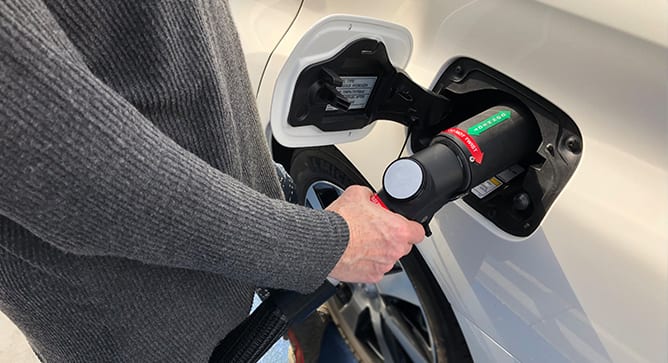News & Views, Volume 51 | Deaerator Tank Failure
EFFECTIVE ASSESSMENT TECHNIQUES
By: Matt David, Michael Greveling, Daniels Peters and Erick Ritter
Recently, Structural Integrity Associates (SI) helped a client with a leaking deaerator tank (DA tank). DA tanks are traditionally used to remove dissolved gasses from liquids. The client’s DA tank in particular is used to remove dissolved oxygen in feedwater for steam-generating boilers; this is done because dissolved oxygen can create a corrosive environment within the boiler as it will attach to the metal components, creating oxides. The DA tank protects the boiler from these corrosive gasses, however, to the DA tank’s detriment, not much protects it from those same gasses. Repairs on DA tanks are common and additionally it is not uncommon for those repairs to continue to experience problems.
The DA tank being investigated for leaking in this investigation had an entire shell segment, various full thickness patch plates, and a head replaced in 2018 due to wall thinning caused by flow-accelerated corrosion (FAC). The current leak was caused by cracking of a girth and longitudinal seam weld in a mismatched repair patch. The failure prompted inspection, stress analysis, and repair consulting by SI. The following reveals the steps taken to repair the failed DA tank.
Initial visual inspection of the leaking DA tank indicated that the problematic repair patch had significant radial mismatch relative to the tank shell to which it was welded and grossly oversized weld layers resulting in high tensile shrinking stresses. The mismatch resulted in significant bending at the weld line and the excessive weaving of the weld layers led to tensile forces acting on the weld imperfections at the toe of the welds. Due to the visual finding, 3D scanning was performed to better understand the magnitude of the mismatch.

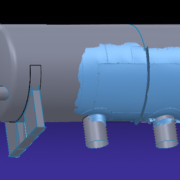
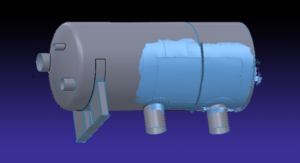
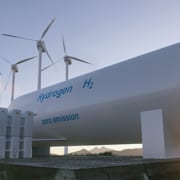
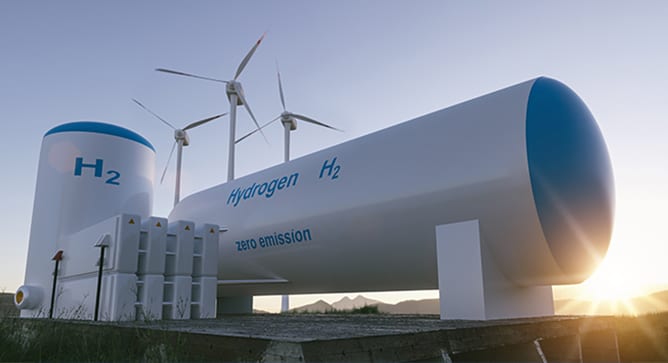
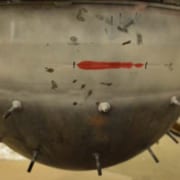
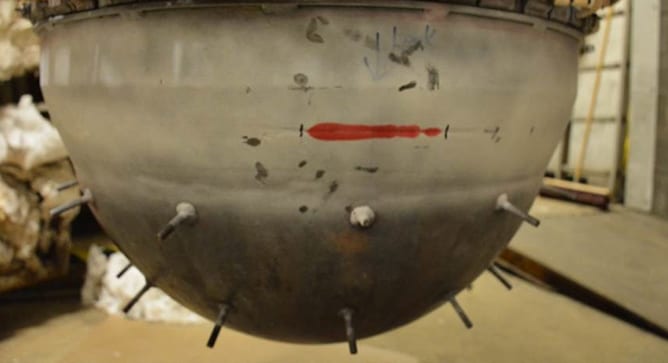 Recently, a client approached SI after finding a through-wall flaw in an autoclave at the head-to-shell weld as indicated by a visible dye liquid penetrant examination (Figure 1). The autoclave was one of eight similar vessels used for processing the client’s product. Three of the autoclaves are identical in construction to the flawed autoclave and operate with similar process conditions. Remote visual examination by the client indicated that all four autoclaves had similar observations at the inside of the head-to-shell weld, but only one was leaking. The remaining four autoclaves are smaller and are used infrequently. The initial call from the client was for SI to provide emergent support for inspection of the three autoclaves identical to the leaking one to meet production demands. SI responded quickly and examined all four autoclaves using a manual phased array ultra-sonic technique (PAUT) from the exterior of the vessel. The manual PAUT examination provided excellent coverage of the weld region and visualization of the through wall flaw (Figure 2).
Recently, a client approached SI after finding a through-wall flaw in an autoclave at the head-to-shell weld as indicated by a visible dye liquid penetrant examination (Figure 1). The autoclave was one of eight similar vessels used for processing the client’s product. Three of the autoclaves are identical in construction to the flawed autoclave and operate with similar process conditions. Remote visual examination by the client indicated that all four autoclaves had similar observations at the inside of the head-to-shell weld, but only one was leaking. The remaining four autoclaves are smaller and are used infrequently. The initial call from the client was for SI to provide emergent support for inspection of the three autoclaves identical to the leaking one to meet production demands. SI responded quickly and examined all four autoclaves using a manual phased array ultra-sonic technique (PAUT) from the exterior of the vessel. The manual PAUT examination provided excellent coverage of the weld region and visualization of the through wall flaw (Figure 2).
